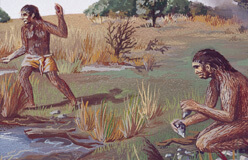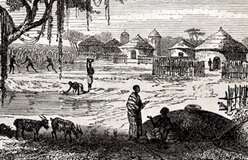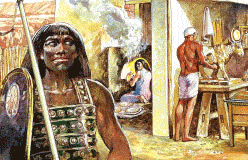If you lived 10,000 years ago, you might have never traveled. Sitting around the fire pit, however, your grandfather might tell stories about the old days.
He might recall when your people were always on the move. Your father might reply, “Traveling was exciting, but the great thing about growing food instead of searching for it is simple: nowadays, we usually have enough to eat. Yes, we have to stay close by to protect the livestock, water the plants, and scare away pests. We also have to sow seeds and harvest crops before animals get to them – but isn’t life better now?”
And it was better. Major change happened when people realized they could grow a lot of food in one place. Large groups could live close together, and almost everyone could eat well. That innovation, or new idea, was at the heart of the agricultural revolution. It probably started in the Middle East, an area that includes southwestern Asia and northeastern Africa. Then the basic techniques of farming—sowing seeds, watering soil, harvesting—spread quickly through major regions of the world. For many, these techniques replaced hunting and gathering as a way of life.








